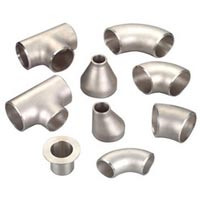

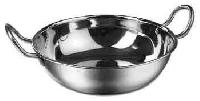




stainless steel sleeve
Get Price Quote
The Stainless Steel Fasteners which is stocked by Harsh Steel are manufactured in accordance with Relevant International Standards such as DIN, ISO, ANSI OR BS standards, providing assured quality with processes, systems and procedures ISO9001:2008 approved. Harsh Steel is 100% percent focused on customer care with are ISO9001:2008 compliant for both in house Manufacturing while providing the best service possible to ensure customer satisfaction. We have reputed clients, an extensive and comprehensive stock range, along with competitive pricing and offer a wide range of different sized cut-lengths of all threads from stock.
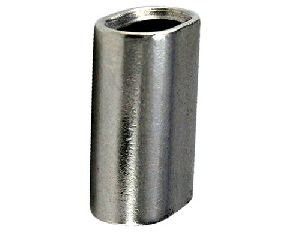
Stainless Steel Pump Sleeve
450 Per Piece
1 Piece (MOQ)
Best Deals from Steel Sleeve

hydraulic sleeves
Get Price Quote
100 Piece (MOQ)
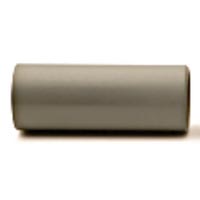
Steel Pipe Sleeves
Get Price Quote
We bring forth Steel Pipe Sleeves of the finest quality. We are identified as the notable Manufacturers, Exporters, and Suppliers of Steel Pipe Sleeves from Mumbai, India. These Pipe Sleeves that we offer are fabricated in conformity to the best standards. They are corrosion resistant and durable. We offer them in a number of specifications, as per the client√ĘÄôs requirements. And, we offer them at minimal prices.

Stainless Steel Shaft Sleeves
100 Per Piece
1000 Piece (MOQ)

Stainless Steel Forged Cylinders Sleeves
Get Price Quote
Forged rounds available in any diameter within our capabilities. Forged bars offer refined grains and improved strength.¬Ľ 1" DIA up to 56" DIA 2500 lbs max¬Ľ Lengths up to 120"¬Ľ No minimum requirement
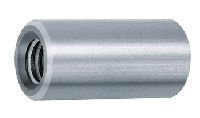
ROUND GALVANISED STEEL SPACER SLEEVE
Get Price Quote
Properties: Thread type x nominal diameter: M8 Outer diameter: 11 mm Length: 30 mm Material: Steel Surface: Galvanised Property class: 4
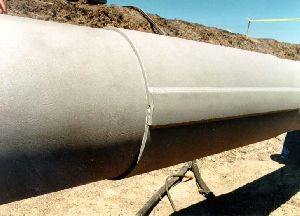
FULL ENCIRCLEMENT STEEL PIPE SLEEVE
Get Price Quote
Full Encirclement Steel Sleeve Full-encirclement steel sleeves have historically been a widely used method for general repair of defects in onshore pipelines.¬† Because they involve welding, they are generally not applicable to the repair of defects in offshore pipelines.¬† In the early 1970s, the American Gas Association funded a major project¬†on the effectiveness of various repair methods with emphasis on full-encirclement sleeves.¬† The results of this work showed that a properly fabricated steel sleeve restores the strength of a defective piece of pipe to at least 100% of SMYS.¬† The keys to properly fabricating a sleeve are the use of a proven procedure and skilled personnel.¬†Most of the previous research on steel repair sleeves has addressed only their response to static pressures and lateral loads.¬† Their response to repeated pressure cycles has not been studied in depth.¬† Pressure-cycle fatigue tests were performed as part of an in-depth evaluation of steel compression sleeves.¬† When they are used to repair defects in pipelines subjected to significant cyclic pressurization, steel sleeves are likely to have a finite time to failure.¬† In the case of a reinforcing sleeve, the useful life might be controlled by the repaired defect, whereas in the case of a pressure-containing sleeve, the sleeve itself would be the critical component.¬† Whenever a steel sleeve is to be used in cyclic service, its fatigue resistance should be evaluated.¬† The results of the fatigue evaluation should be used to establish a suitable limit on the allowed service life before replacement is required.¬† Type A Sleeves (Reinforcing) The¬†Type A¬†sleeve is particularly attractive because it can be installed on a pipeline without welding it to the carrier pipe.¬† Such a sleeve provides reinforcement for the defective area.¬† It cannot contain pressure and is used only for nonleaking defects.¬† It should be installed at a pressure level below that at which the area of the line pipe with the defect might be expected to fail.¬†A typical configuration and weld details for a Type A sleeve are shown in Figures 1 and 2, respectively.¬† The sleeve consists of two halves of a cylinder of pipe or two appropriately curved pieces of plate that are placed around the carrier pipe at the damaged area and after positioning, are joined by welding the side seams.¬† As shown in Figure 2, the seams may be single-V butt welds or overlapping steel strips fillet welded to both halves may join the sleeve halves.¬† If the side seams are to be butt welded and the sleeve halves are to be made from the same diameter pipe as the carrier pipe, then each¬†half¬†should actually be more than half of the circumference of the piece of pipe.¬† Otherwise, the gap to be filled by butt-welding will be too large.¬† With the overlapping strip concept, it is not essential that each¬†half¬†actually be more than half of the circumference because the gap can be easily bridged.¬†One major advantage of a Type A sleeve over other types of repairs is that for relatively short flaws it can function effectively without itself necessarily being a high-integrity structural member.¬† Relatively short flaws are those whose length (L) are less than or equal to¬†, where¬†D¬†is pipe diameter,¬†t¬†is pipe wall thickness, and all dimensions are in consistent units.¬† For such flaws, the sleeve‚Äôs role is limited to restraining bulging of the defective area.¬† As a result, it can be fabricated simply and requires no rigorous nondestructive inspection to ensure its effectiveness.¬† Also, because the sleeve does not carry much hoop stress in the case of short flaws, it can fulfill its restraining role without necessarily being as thick as the carrier pipe.¬† As a rule of thumb, the thickness of the sleeve should not be less than two-thirds of the thickness of the carrier pipe when used to repair short flaws, assuming that the sleeve is at least as strong as the carrier pipe.¬† It is common to simply match the grade and wall thickness of the carrier pipe. With flaws longer than¬†, the sleeve thickness should be at least as great as that of the carrier pipe, again assuming that the sleeve is at least as strong as the carrier pipe.¬† It is permissible to use sleeves thinner than the carrier pipe if their strength is increased by an amount sufficient to compensate for their thickness being less than that of the carrier pipe.¬† In a similar fashion, the sleeve could be of an acceptable material with lower strength than that of the carrier pipe if its thickness is increased to compensate for the difference is strength.¬† To assure that adequate restraint exists and that the sleeve will indeed prevent a rupture, the sleeve should be extended onto sound, full-thickness pipe at least 50 mm (2 inches) beyond the ends of the defect.¬† The operator should design the repair to carry anticipated loads.¬†The Type A sleeve has some minor disadvantages.¬† It is not useful for circumferentially oriented defects because it has no effect on the longitudinal stress in the carrier pipe.¬† Secondly, it cannot be used to repair leaking defects.¬† Thirdly, it creates a potential crevice in the form of an annular space between it and the carrier pipe that may be difficult to protect from corrosion.¬† However, there have been no reported service failures caused by this potential problem.¬† Because of this potential problem, however, some companies use full-encirclement sleeves as Type A sleeves, but weld the ends to the pipe to prevent further corrosion, thus making them essentially Type B sleeves. Assuring Effective Reinforcement To be effective, the Type A sleeve should reinforce the defective area, restraining it from bulging radially as much as possible.¬† First and foremost, the sleeve should be installed with a minimal gap between the sleeve and the carrier pipe in the area of the anomaly.¬† Forming and/or positioning the sleeve so that it firmly contacts the carrier pipe, especially at the area of the defect, can assure that the gap is minimized.¬† One or more of the following actions (discussed separately in this sub-section) can further enhance the effectiveness of a Type A sleeve:¬†‚ÄĘ Reduce pressure in the carrier pipe during sleeve installation.¬†‚ÄĘ Externally load the sleeve to force it to fit tightly against the carrier pipe.¬†‚ÄĘ Use a semi-liquid material that will fill and harden in any gaps in the annular space between the sleeve and the carrier pipe.¬†‚ÄĘ Apply special fit-up procedures for seam welds.¬†‚ÄĘ Use special epoxy-filled shells. Pressure Reduction Pressure reduction is essential if the defect being repaired is at or near its predicted failure pressure at the start of the repair operation.¬† If the pressure is not reduced in such a case, the repaired defect could begin leaking after the sleeve is installed.¬† In contrast, when the pressure is reduced, the radial bulging at the defect location is reduced and can be prevented from recurring during re-pressurization by using a tightly fitting sleeve.¬† Research results(19)(20)¬†indicate that a pressure reduction of 33-1/3% from the predicted failure pressure was adequate for the application of Type A sleeves. Typically, a pressure reduction is not necessary if it can be shown that the defect is not at or near its predicted failure pressure.¬† For example, if calculations based on the size of the defect show that its predicted failure pressure is 33-1/3% or more above the current pressure, a Type A sleeve can effectively repair it without a reduction in pressure.¬†Reinforcing sleeves usually do not share much of the hoop stress that is acting on the carrier pipe unless special application techniques are used.¬† Even if the sleeve fits perfectly and has 100%-efficient side seams, it will at most carry one-half of the hoop stress recovered after a pressure reduction if its wall thickness is that same as that of the carrier pipe.¬† The optimum amounts of stress sharing produced by a snugly fitting sleeve for various amounts of pressure reduction are illustrated in Figure 3.¬† The notation used in Figure 3 is as follows:¬†ta¬†= actual wall thickness of carrier pipe¬†ts¬†= wall thickness of steel sleeve¬†So¬†= initial hoop stress in carrier pipe¬†Sr¬†= reduced hoop stress in carrier pipe after installation of steel sleeve¬†Pr¬†= reduced pressure at time sleeve is applied¬†Ph¬†= highest pressure previously experienced by the carrier pipe after defect was present.¬†SMYSc¬†= specified minimum yield strength of carrier pipe.¬†SMYSS¬†= specified minimum yield strength of sleeve.¬†The actual amount of hoop stress supported by the sleeves is usually much less than indicated on the graph due to variations in fit and efficiency of side seams.¬† In spite of this, a properly fabricated sleeve can restore the strength of a defective piece of pipe to at least 100% of SMYS. Figure 3. Theoretical relationships between carrier pipe stress, repair pressure, and wall thickness Figure 4 shows predicted amounts of stress sharing for various degrees of less than optimum fit-up with a sleeve of the same wall thickness as the carrier pipe.¬† The degree of fit-up was modeled using a load transfer coefficient as follows:¬†‚ÄĘ 1.0 for ideal case of¬†perfect¬†fit-up, which is never approached in practice without mechanical loading¬†‚ÄĘ 0.50 for a strong highly compressed epoxy filler, such as that used in tight-fitting compression sleeves (see Section 3.3.2.6)¬†‚ÄĘ 0.25 for typical tight-fitting sleeve with epoxy filler¬†‚ÄĘ 0.15 for typical tight-fitting sleeve with epoxy filler only in the defect area¬†One can see that there is much less transfer of hoop stress to the sleeve in the realistic cases than in the ideal case.¬† Since the main function of sleeves is to prevent radial bulging at the defect, it is not necessary for them to carry much stress.¬† However, they should fit snugly to restrain bulging.¬†Sleeves used to repair long defects (i.e., L ‚Č•, should be capable of sustaining a significant amount of hoop stress and are expected to absorb an appreciable amount of hoop stress.¬† The reason is that a long defect-weakened region will not be able to distribute hoop stress to the areas of the carrier pipe beyond the ends of the defect.¬† Instead, the region will tend to yield plastically and transfer circumferential stress to the sleeve.¬†Figure 4. Predicted relationships between carrier pipe stress, repair pressure, and degree of fit-up (transfer coefficient).¬† Mechanical Loading The two halves of a sleeve can be forced to conform to the carrier pipe and their sides can be drawn together appropriately for welding by mechanical means such as those shown in Figure 5.¬† These can consist of chains and jacks (Figure 5b) or special preloading devices (Figure 5c).¬† Lugs can be pre-installed on each half (Figure 5a).¬† At the option of the installer, the lugs can be cut off after installation or left in place.¬† Cutting them off facilitates coating the sleeve, an important consideration.¬† A third option is the special chain-clamp device shown in Figure 5c.¬† The hydraulic actuator that accompanies this latter device can be used to produce a significant preload in the sleeve.¬† A significant preload can enhance the effectiveness of a Type A sleeve in the same manner as a pressure reduction in the carrier pipe.¬† However, preload should not be substituted for pressure reduction in cases where a reduction of pressure is necessary for safety prior to the start of repair operations. Figure 5. Mechanical methods for assuring tight-fitting Type A sleeves Hardenable Fillers Hardenable fillers, such as epoxy or polyester compounds, are frequently used to ensure that no gaps exist between the sleeve and the carrier pipe. ¬†These compounds are typically mixed and trowelled into depressions in the carrier pipe, such as dents and pits.¬† After the mixture hardens, the filler is shaped using files or other similar tools until the outside diameter of the pipe is restored.¬† Another alternative is described below.¬† Before the mixture hardens, the sleeve halves are placed around the pipe, and mechanical means, such as those described above, are used to squeeze the excess filler material.¬† By the time the side seams of the sleeve have been welded, the filler mixture has usually solidified and load transfer between the sleeve and the carrier pipe is assured at all defect locations.¬† Tests performed on pipe sections with filled gouges and dents(19)(20)¬†showed that such fillers are very effective. Fit-Up on Submerged-Arc-Welded and Flash-Welded Line Pipe One concern with respect to applying Type A sleeves is the presence of a crown or reinforcement on the seam weld of submerged-arc-welded (SAW) carrier pipe or the flash on flash-welded carrier pipe.¬† To assure a tight-fitting sleeve, three options are available.¬† The first option is to remove the weld crown or flash by grinding it flush to the surface of the carrier pipe.¬† This option is acceptable if the pressure has been reduced as suggested in Section 3.3.2.1.¬† The second option is to grind a compensating groove in one of the sleeve halves.¬† If this second option is selected, it may be desirable or necessary (in the case of long defects) to use a sleeve that is thicker than the carrier pipe by an amount that compensates for the thickness of material removed, including any compensation needed for differences in material strength.¬† The third option is to force the unmodified sleeve over the weld reinforcement after sufficient filler material has been deposited to fill the expected gaps.¬† This third option is acceptable if the resulting fit-up of the sleeve halves is adequate for side-seam fabrication.¬† With the¬†standardmethod of application shown in Figure 5b, there is no risk of damaging the weld.¬† This third option should not be used with relatively¬†high-force¬†methods, such as lug and bolt (Figure 5a) or chain clamp (Figure 5c), as local bending adjacent to the seam weld reinforcement may result. Epoxy-Filled Shells British Gas developed a variation of the filled-sleeve concept in the form of their¬†epoxy-filled shell¬†repair method.(25)¬† In this case, the¬†shell¬†is a sleeve with a standoff distance of several millimeters from the carrier pipe.¬† The shell is placed on the defective pipe, and bolts are used to center it.¬† The side seams are then welded, and the gaps at the ends are sealed with trowelled filler.¬† After these seals have hardened, epoxy is pumped into the annular space until it comes out an overflow hole at the top of the sleeve.¬†Once the epoxy filler has hardened, the radial bulging tendency of the defect is restrained by the epoxy in the same manner as a conventional Type A sleeve would have if it were directly in contact with the sleeve.¬† Data have been presented(26)¬†that show that the epoxy-filled shell also can be used to repair weakened, but not leaking, girth welds.¬† Bonding between the epoxy and the sleeve and the epoxy and the pipe permits the transfer of longitudinal stress.¬† If the sleeves are used for an under-water repair, an epoxy that cures properly in water should be used.¬† Steel Compression Sleeves Steel compression sleeves are a special class of Type A sleeves.¬† They are designed, fabricated, and applied so that the repaired section of the carrier pipe is maintained under compressive hoop stress during subsequent operation.¬† This approach is attractive for repairing longitudinally oriented crack-like defects because without a tensile hoop stress there is no driving force for crack growth.¬† This type of sleeve is not suitable for the repair of circumferential cracks or for defects in field bends.¬† CSA Z662(10)¬†addresses the use of steel compression sleeves.fSteel compression sleeves involve installing two sleeve halves over the defect area and drawing them together using clamps, jacks and chains, or lugs and bolts.¬† The sleeve halves are then welded together using conventional welding techniques. Pressure reduction during installation is normally used to induce compression in the carrier pipe.¬† Thermal contraction of the longitudinal seam welds also promotes compression in the carrier pipe.¬† Epoxy filler is used between the carrier pipe and sleeve to achieve the transfer of stresses.¬† As pointed out previously, pressure reduction alone will only transfer a portion of the hoop stress from the carrier pipe to the sleeve.¬†Half Pipe Sleeve¬†is a commercial product that was developed to combine pressure reduction with thermal shrinkage of the sleeve for achieving full compression in the carrier pipe.¬† Figure 6 illustrates the installation process for Half Pipe Sleeve.¬† Two steel sleeve halves with sidebars are installed over the defect, the sleeve halves are heated, and are initially held in place with chain clamps or hydraulic jacks.¬† The halves are then welded together using two longitudinal sidebars.¬† During installation, an epoxy layer is applied between the sleeve and the carrier pipe.¬† The epoxy is used as a lubricant when the halves are placed on the carrier pipe and later acts as a filler to evenly transfer the load between the sleeve and the pipe.¬† As with other versions of Type A sleeves, no welds are made to the carrier pipe.¬† Thermal shrinkage of the sleeve upon cooling helps induce a compressive stress into the carrier pipe.(23)¬† A completed PetroSleeve installation is shown in Figure 7.¬†Several factors influence the degree of stress reduction in the carrier pipe.¬† These include the fit of the sleeve, the pipe wall thickness and diameter, the sleeve wall thickness, the internal pressure during installation, and the installation temperature.¬† Specially developed software can be used to determine the target sleeve installation temperature and to help confirm that the desired amount of sleeve compression has been achieved.(27) Quality control procedures for Half Pipe Sleeve involve monitoring sleeve temperature during the heating process and verification of the achieved carrier pipe compression by measuring how far the two sleeve halves advance towards each other using caliper measurements.¬† Three sets of measurements on each side of the sleeve are typically made.¬† Nondestructive inspection of the completed welds is conducted after cooling. ¬†

stainless steel sleeve
Get Price Quote
Sleeve Nuts, available in a variety or grades, materials, and finishes, in metric and inch sizes. We are a family owned, full line fastener distributor specializing in fastener products for companies involved in Equipment Manufacturing, Mining, Oil Refineries, Chemical manufacturing, Steel and Aluminum Manufacturing,

Mild Steel Bearing Adapter Sleeve
100 Per Piece

stainless steel sleeve
Get Price Quote

alloy steel sleeve
Get Price Quote
alloy steel sleeve, Slide Retainer, Slide Core unit, Plate Accelerator

stainless steel sleeves
Get Price Quote
We are best stainless steel sleeves